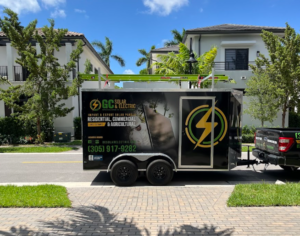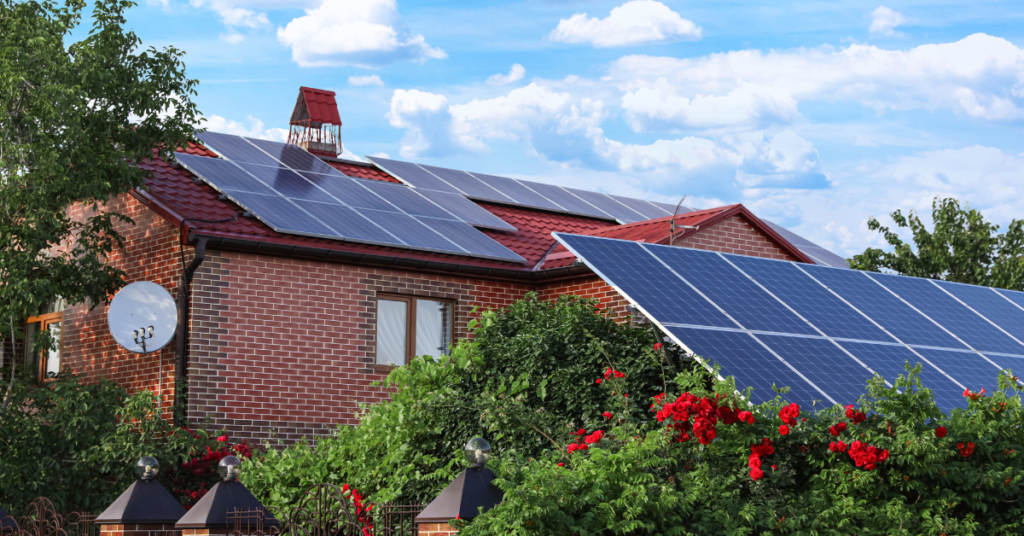
Solar Panel Installation or renewable is not only fashionable now but also has the potential to be the future of sustainable living. Renewables will have to be the norm for the population to easily sustain energy needs since power rates are climbing and global warming is worsening. Solar panel installation is the most innovative approach to renewable energy projects, which gives homeowners and companies the option to use solar-based electricity for their electric needs. Nevertheless, why is this technology so indispensable, and how can it transform energy consumption? Let’s confirm the facts.
Solar panel installation project is the building of a system, the function of which is to change sunlight into electricity. These systems consist of several main components, i.e. solar panels, an inverter, mounting hardware, and electrical wiring. Solar panels are generally put on rooftops or open areas to absorb the most sunlight and thus, to achieve the maximum level of energy production. However, the wire mold is an essential part of the spelling of the incoherence of the current (DC) generated by the units into alternating current (AC) which is mainly used by most household equipment. Installation also implies the precise determination and placing of the panels in such a way that it is the most efficient possible, with the purpose of the positioning of the panels, and shading from the nearby buildings or trees. By using the sun’s power to its maximum extent, solar panel systems prove to be a clean and green energy source. Contact now
| Type | Advantages | Ideal Use |
| Monocrystalline | High efficiency, long-lasting, sleek design. | Homes and businesses. |
| Polycrystalline | Lower cost, good efficiency. | Budget-friendly installations. |
| Thin-Film | Flexible, lightweight, easy to install. | Portable or small-scale setups. |
Each type has its benefits, so choosing the right one depends on your energy needs and budget.
Using solar energy not only generates multiple advantages for your pockets but is also environmentally friendly in this case. Let’s find out the main points people base their decision on when they opt for solar panel installation:
Besides making sure you won’t get any electricity bills, solar panels are shining contributors in this regard because they draw energy from the sun which is how they run your home. Moreover, to the extent that you switch to renewable energy, you are reducing your carbon footprint, thus, environment alias global warming and proffers a cleaner near-term future. Solar energy is also a way of gaining autonomy from energy; it lessens the dependence on traditional energy sources when prices might change and availability is limited. What’s more, solar panel installation proves to be the sure road to not only saving money at the moment but also the long run. Fortunately, due to the initiatives of the government and dropping prices, it is currently a suitable moment to migrate to solar.
Solar panels can significantly reduce or even eliminate your electricity bills, as they harness energy from the sun to power your home. Additionally, by using renewable energy, you’re reducing your carbon footprint, which helps combat climate change and promotes a cleaner, more sustainable future. Solar energy also increases energy independence, reducing reliance on traditional energy sources that may fluctuate in cost and availability. Furthermore, installing solar panels can increase the value of your home, making it a wise investment for the future. With government incentives and decreasing costs, now is an ideal time to make the switch to solar.
Solar panels produce clean energy without releasing harmful emissions. This helps combat climate change and reduces pollution.
Although the initial setup cost can be high, solar panels significantly reduce electricity bills. Over time, they pay for themselves and can even help you earn money by selling excess energy back to the grid.
Solar panels allow you to rely less on utility companies. You can generate your own electricity and avoid rising energy costs.
Homes with solar panels are often valued higher in the market. Buyers are attracted to the long-term energy savings and eco-friendly features.

The whole installation process can be divided into several easy steps thus making the whole thing very fluent and hustle-free. Firstly, collect all the necessary equipment and materials to avoid any interruptions. Then, the guidelines have to be strictly adhered to so that the settings are correctly done. In the last place, check the installation of the device by running some tests to see if everything is in perfect working condition. Through the above steps, you can carry out the installation process smoothly.
An expert evaluates your home or property to determine if it’s suitable for solar panels. Factors like roof condition, sunlight exposure, and energy needs are considered.
The right type and number of solar panels are chosen based on your energy consumption. The system design includes wiring, inverters, and optional battery storage.
The panels are securely mounted on your roof or a ground system. The inverter is connected to convert solar energy into usable electricity.
After installation, the system is inspected for safety and efficiency. Once approved, it’s activated, and you can start using solar energy.
The cost of solar panel installation can vary depending on factors like system size, type of panels, and location. Here’s a rough breakdown:
| Expense | Cost Range |
| Solar Panels | $3,000 – $10,000 |
| Inverter | $1,000 – $3,000 |
| Installation and Labor | $2,000 – $5,000 |
| Additional Components | $500 – $1,500 |
Most systems pay for themselves within 5-10 years. Since solar panels last for 25-30 years, you’ll enjoy many years of free or low-cost electricity after covering the initial expense.
Solar panels are a good investment, but sometimes it is not that easy. It is sometimes the case that a solar energy system can prove to be expensive to purchase and install at first, and this might scare away some buyers. Besides, the efficacy of solar panels can be undermined by some factors such as weather conditions and the amount of sunlight that your place experiences. Although the upkeep is in fact low, it is still prudent to do a cleaning and inspections from time to time to get the best performance. In the end, the work that goes into finding the incentives or rebates, including the research and paperwork, can be a maze to move through.
The initial investment can be a hurdle for some, but financing options and tax incentives can help reduce the burden.
Solar panels work best in sunny conditions. In cloudy or rainy areas, they may produce less energy. However, modern panels are designed to work efficiently even in low-light conditions.
Not all roofs are ideal for solar panels. If your roof is shaded or in poor condition, you may need repairs or consider a ground-mounted system.
Solar panels are a key part of the larger renewable energy movement. Here are some ways they work alongside other solutions:
Solar panels have transformed energy use for both individuals and communities. For instance:
Solar panel installation is a wise decision for those who wish to save money, cut their carbon emissions, and use renewable energy. It’s not only trustworthy and cheaper, but it also is a manifestation of a long-term vision towards making future survival possible. The panels, which create electricity from the sun, thus are less dependent on fossil fuels and your bills come down over time. The upfront cost of solar panels is outstripped by the savings over time, tax credits, and possibly higher property values. Apart from elevating your house, the solar panels from your investment will directly help the environment as well. Go green today and become a part of the wider spread global initiative for a better planet, read more!
Optimized by Optimole